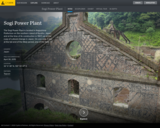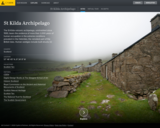
1881 CE - 1969 CE, Ritual Burial Site of the Buganda Kings
- Subject:
- Architecture
- Arts and Humanities
- CTE
- World history
- Date Added:
- 06/06/2017


1881 CE - 1969 CE, Ritual Burial Site of the Buganda Kings

1230 CE - 1957 CE, Medieval Church in Nurnberg

1150 CE - 1801 CE, A Romanesque Masterpiece in the Heart of Provence

1549 CE - 1763 CE, Original Portuguese Capital of Brazil

8th and 7th centuries BCE, Samarkand is a city in modern-day Uzbekistan and is one of the oldest inhabited cities in Central Asia.

1718 CE - 1821 CE, Spanish Mission System of Colonial Texas

1922 CE - 2015 CE, Irrigating the West and Powering the Future

300 BCE - 700 CE, The Basketmakers of Sivu'ovi at Petrified Forest National Park - The Arizona Petrified Forest National Park contains one of the world's largest concentrations of petrified wood, historic structures, archaeological sites and fossils. Scattered throughout the park are traces of nearly 13,000 years of human history and culture. Located in the southern portion of the Petrified Forest National Park, Sivu'ovi is an extensive site containing the remains of a large Basketmaker II period pit house village and several small Pueblo period rubble mounds. The Basketmaker II period is the least studied period of occupation in the region. Many of the structures are situated on the edge of the bluff, which faces serious erosion problems. Theft of petrified wood is also an ongoing problem at the park, and nearly 14 tons of the fossil wood disappear from the forest each year.

1907 CE - 1965 CE, Japan's turning point in technological development

1967 CE - Present, The Soyuz 7K-OK model capsules were designed to ferry cosmonauts to and from the Salyut 1 Soviet space station. In order to prevent foreign acquisition of Soviet technology, retired Soyuz capsules were typically destroyed. As such, few intact Soyuz capsules exist today. This specific capsule is on exhibit in the Chabot Space Center in Oakland, California. CyArk received the laser scans in 2004 from the Space Center to provide a digital record of this important part of astronautical history.

1495 CE - 1500 CE, Gothic Masterpiece of Lithuania

1830 CE - 1930 CE, Surviving in Isolation

1100 CE - 1714 CE, Stone Castle atop a Volcanic Crag

1135 CE - 1146 CE, A Masterpiece of Medieval Engineering

1958 CE - 1973 CE, An Australian icon

1470 CE - 1532 CE, Inca Outpost in Peru

1000 CE - 1450 CE, A Thousand Years of Continuous Occupation

100 BCE - 750 CE, Ancient Metropolis in the Valley of Mexico - Located 32 kilometers (20 miles) northeast of Mexico City, Teotihuacán is one of the largest and most impressive Mesoamerican sites; its expansive urban causeways and massive pyramids rise from the Basin of Mexico as a monument to its lasting influence and grandeur. The name Teotihuacán translates to ‘The City of the Gods' in the Nahuatl language of the Aztec people, who conquered the area over 700 years after Teotihuacán fell. Teotihuacán was laid out on a grid and functioned as a city with a densely-populated and fully-urbanized central zone that was carefully planned by its founders. The Pyramid of Quetzalcoatl (which translates as ‘Feathered Serpent') and the buildings of its surrounding plaza contain the greatest concentration of the city's painted and sculptural iconography.

3000 BCE - 2000 BCE, Surviving Neolithic Landscape

1912 CE - 1913 CE, Carnegie Hall of the Prairies